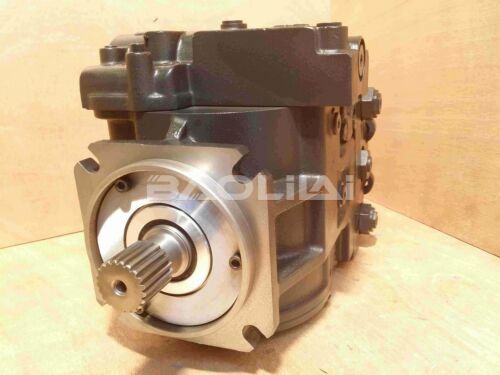Negative effects of excess air in hydraulic pumps
Too much air in a hydraulic pump can cause a number of problems including reduced pump performance, increased component wear and potential damage to the system. The main effects of excess air in a hydraulic pump include:
Reduced pump performance: When there is too much air in a hydraulic pump, it reduces the efficiency and flow of the pump. This is because air takes up space in the pump that would otherwise be filled with fluid, reducing the amount of fluid that can be pumped through the system.
Increased wear: When air is present in a hydraulic pump, it causes increased wear on components such as pistons, cylinders and seals. This is because air causes cavitation, the formation of air bubbles that can burst and cause component damage.
Potential damage to the system: If there is too much air in the hydraulic system, it can damage other components such as valves and hoses. This is because the air creates pressure spikes that exceed the design limits of these components, causing them to fail.
Increased Noise: When air is present in a hydraulic system, it causes increased noise and vibration. This is because the air creates turbulence and cavitation, which creates noise and vibration.
90-R-250-KA-5-NN-80-T-4-F1-K-03-NNN-20-20-24 90R250KA5NN80T4F1K03NNN202024
90R250-KA-5-NN-80-T-4-F1-K-03-NNN-20-20-24 90R250KA5NN80T4F1K03NNN202024
90-R-250-KA-5-NN-80-T-4-F1-J-03-NNN-20-20-24 90R250KA5NN80T4F1J03NNN202024
90R250-KA-5-NN-80-T-4-F1-J-03-NNN-20-20-24 90R250KA5NN80T4F1J03NNN202024
90-R-250-KA-5-NN-80-T-4-C8-K-04-NNN-42-42-24-F001 90R250KA5NN80T4C8K04NNN424224F001
90R250-KA-5-NN-80-T-4-C8-K-04-NNN-42-42-24-F001 90R250KA5NN80T4C8K04NNN424224F001
90-R-250-KA-5-NN-80-T-4-C8-J-03-NNN-35-20-26 90R250KA5NN80T4C8J03NNN352026
90R250-KA-5-NN-80-T-4-C8-J-03-NNN-35-20-26 90R250KA5NN80T4C8J03NNN352026
90-R-250-KA-5-NN-80-T-3-F1-K-03-NNN-35-35-24 90R250KA5NN80T3F1K03NNN353524
90R250-KA-5-NN-80-T-3-F1-K-03-NNN-35-35-24 90R250KA5NN80T3F1K03NNN353524
Reduced system reliability: When there is too much air in a hydraulic system, it reduces system reliability. This is because air can cause fluctuations in pressure and flow rate, which can affect the performance of other components in the system.
In summary, too much air in a hydraulic pump can lead to a host of problems including reduced pump performance, increased component wear, potential damage to the system, increased noise and vibration, and reduced system reliability. It is important to ensure that the hydraulic system is properly filled with fluid and that any air is removed from the system prior to operation to prevent these problems from occurring.

To prevent the negative effects of excess air in a hydraulic pump, it is important to take steps to properly fill and maintain the hydraulic system. Some possible steps include:
Fill the hydraulic system properly: When filling the hydraulic system, it is important to ensure that all air is removed from the system. This can be done by deflating the system and filling it slowly to ensure all the air is replaced by the liquid.
Regular Maintenance: Regular maintenance of your hydraulic system will help prevent air from building up in the system. This may include checking fluid levels, replacing worn parts, and making sure filters are clean and functioning properly.
Use the Correct Fluid: Using the correct type and grade of hydraulic fluid will also help prevent air buildup in the system. It is very important to use the fluids recommended by the pump manufacturer and to avoid mixing different types of fluids.
Avoid Sudden Pressure Changes: Sudden pressure changes in hydraulic systems can cause air to become trapped in the system. It is important to avoid sudden pressure changes and to operate the system within the recommended pressure range.
Fix leaks: Leaks in hydraulic systems can allow air to enter the system. It is important to address leaks as soon as they are detected to prevent air from building up in the system.
90-R-250-KA-5-NN-80-T-3-C8-K-09-NNN-14-14-24 90R250KA5NN80T3C8K09NNN141424
90R250-KA-5-NN-80-T-3-C8-K-09-NNN-14-14-24 90R250KA5NN80T3C8K09NNN141424
90-R-250-KA-5-NN-80-T-3-C8-K-05-NNN-20-20-24 90R250KA5NN80T3C8K05NNN202024
90R250-KA-5-NN-80-T-3-C8-K-05-NNN-20-20-24 90R250KA5NN80T3C8K05NNN202024
90-R-250-KA-5-NN-80-T-3-C8-K-04-NNN-30-14-28 90R250KA5NN80T3C8K04NNN301428
90R250-KA-5-NN-80-T-3-C8-K-04-NNN-30-14-28 90R250KA5NN80T3C8K04NNN301428
90-R-250-KA-5-NN-80-T-3-C8-K-03-NNN-42-42-24 90R250KA5NN80T3C8K03NNN424224
90R250-KA-5-NN-80-T-3-C8-K-03-NNN-42-42-24 90R250KA5NN80T3C8K03NNN424224
90-R-250-KA-5-NN-80-T-3-C8-K-03-NNN-38-38-24 90R250KA5NN80T3C8K03NNN383824
90R250-KA-5-NN-80-T-3-C8-K-03-NNN-38-38-24 90R250KA5NN80T3C8K03NNN383824
By taking these measures, you can prevent the negative effects of excess air in your hydraulic pump and ensure smooth and reliable operation of your hydraulic system.
Another way to prevent the negative effects of too much air in a hydraulic pump is to use an air eliminator or air relief valve. These valves are designed to automatically bleed air from the hydraulic system and prevent its build-up in the pump.
Air eliminators work by creating an area of low pressure in the hydraulic system, which releases air. This low pressure area can be created by placing air eliminators at high points in the system where air is most likely to collect. As the hydraulic oil flows through the air eliminator, any air present in the system is released and removed from the system.
Air relief valves, on the other hand, are designed to automatically release air from a hydraulic system when the pressure drops below a certain level. These valves can be installed on hydraulic pumps or other parts of the system where air may accumulate.
By using an air eliminator or air release valve, you can ensure that any air entering the hydraulic system is quickly and efficiently removed, thereby preventing the negative effects of air buildup in the pump.
In summary, preventing the negative effects of excess air in a hydraulic pump requires properly maintaining and filling the hydraulic system, using the correct type of fluid, avoiding sudden pressure changes, addressing leaks promptly, and using air eliminators or vent valves. By taking these steps, you can ensure the smooth and reliable operation of your hydraulic system and prevent damage to the pump and other components in the system.
This article is published by the official website of Baolilai Hydraulics, please contact the author and indicate the source for reprinting:https://www.baolilai-pump.cn/news/341.html






